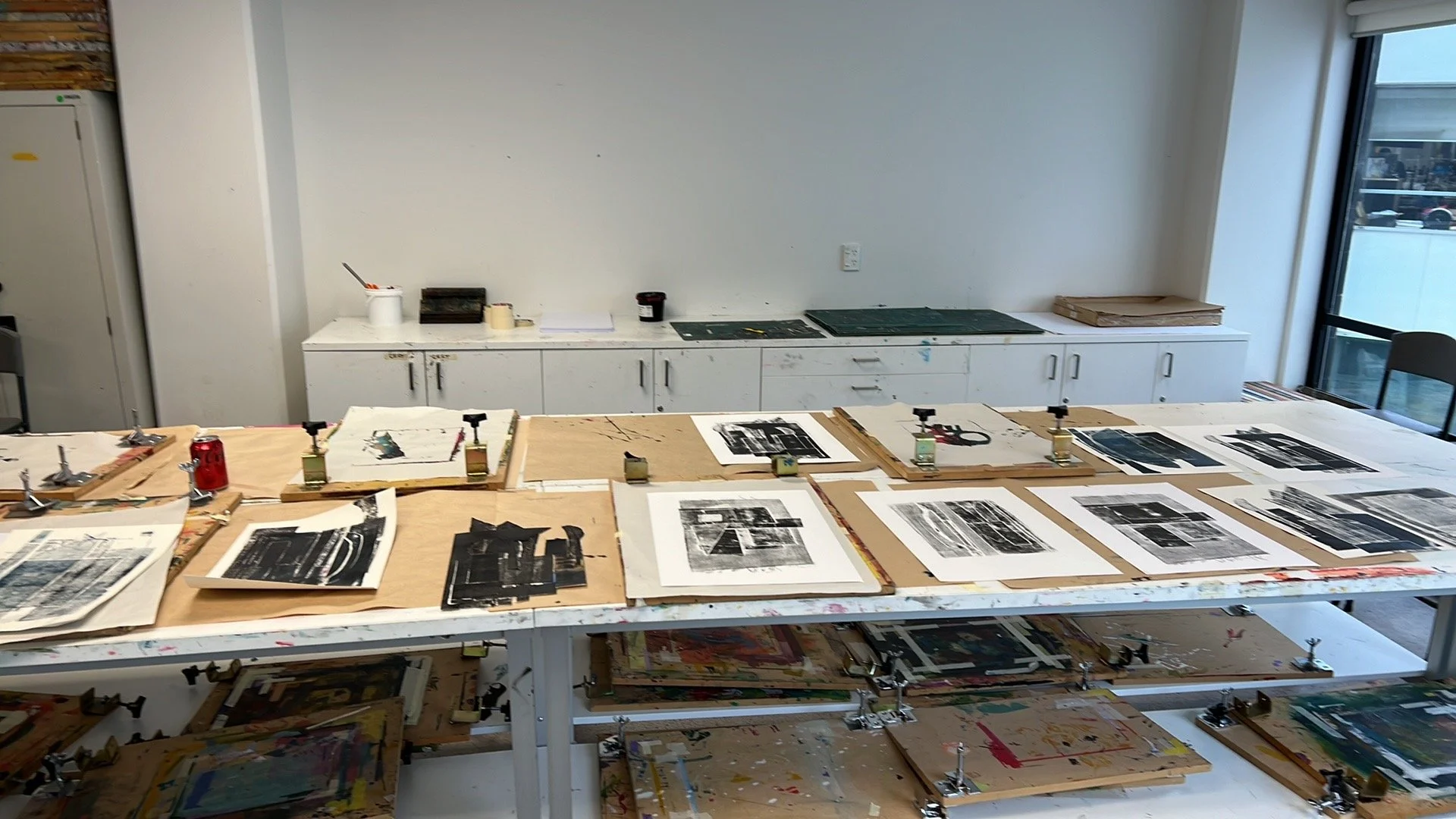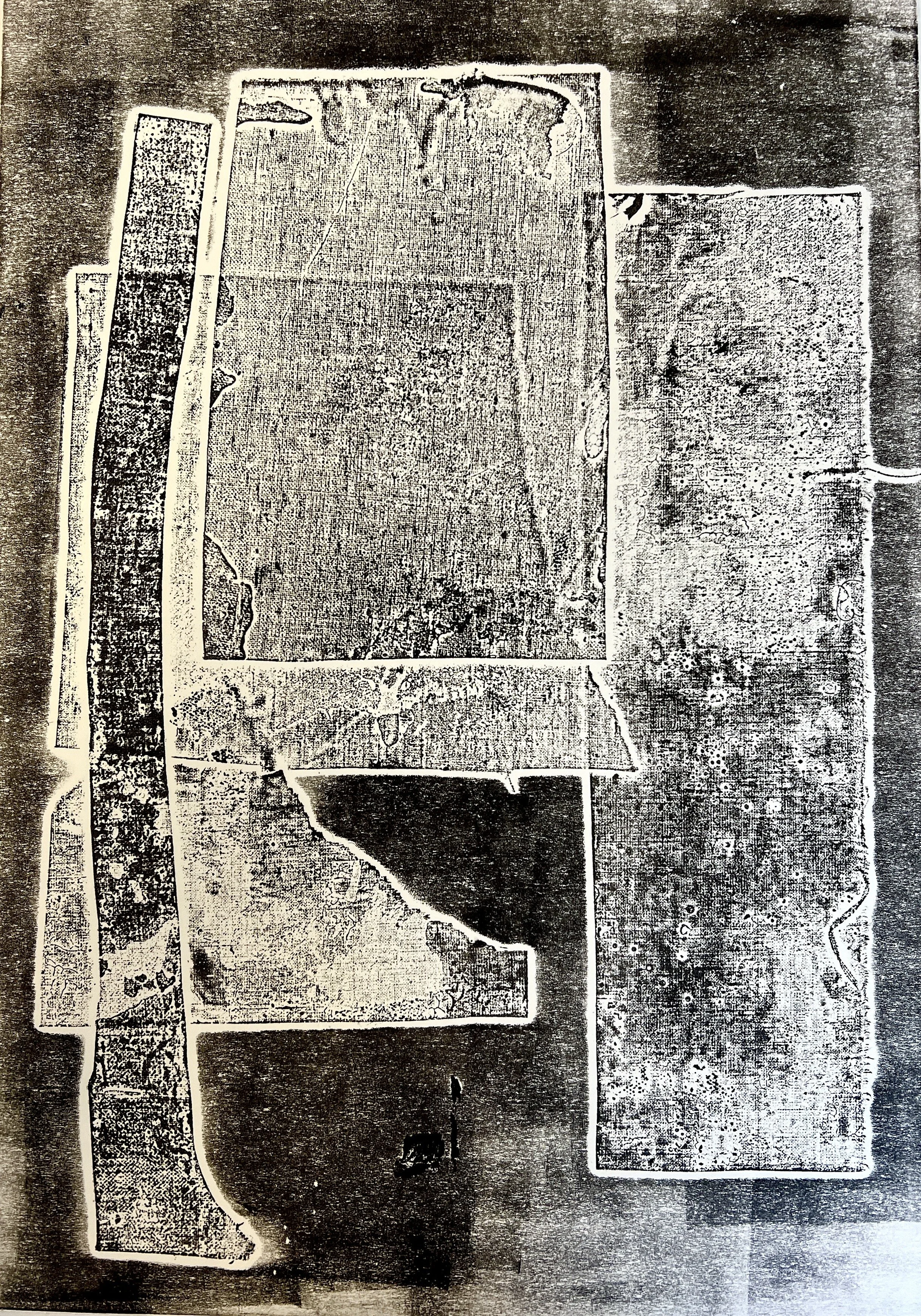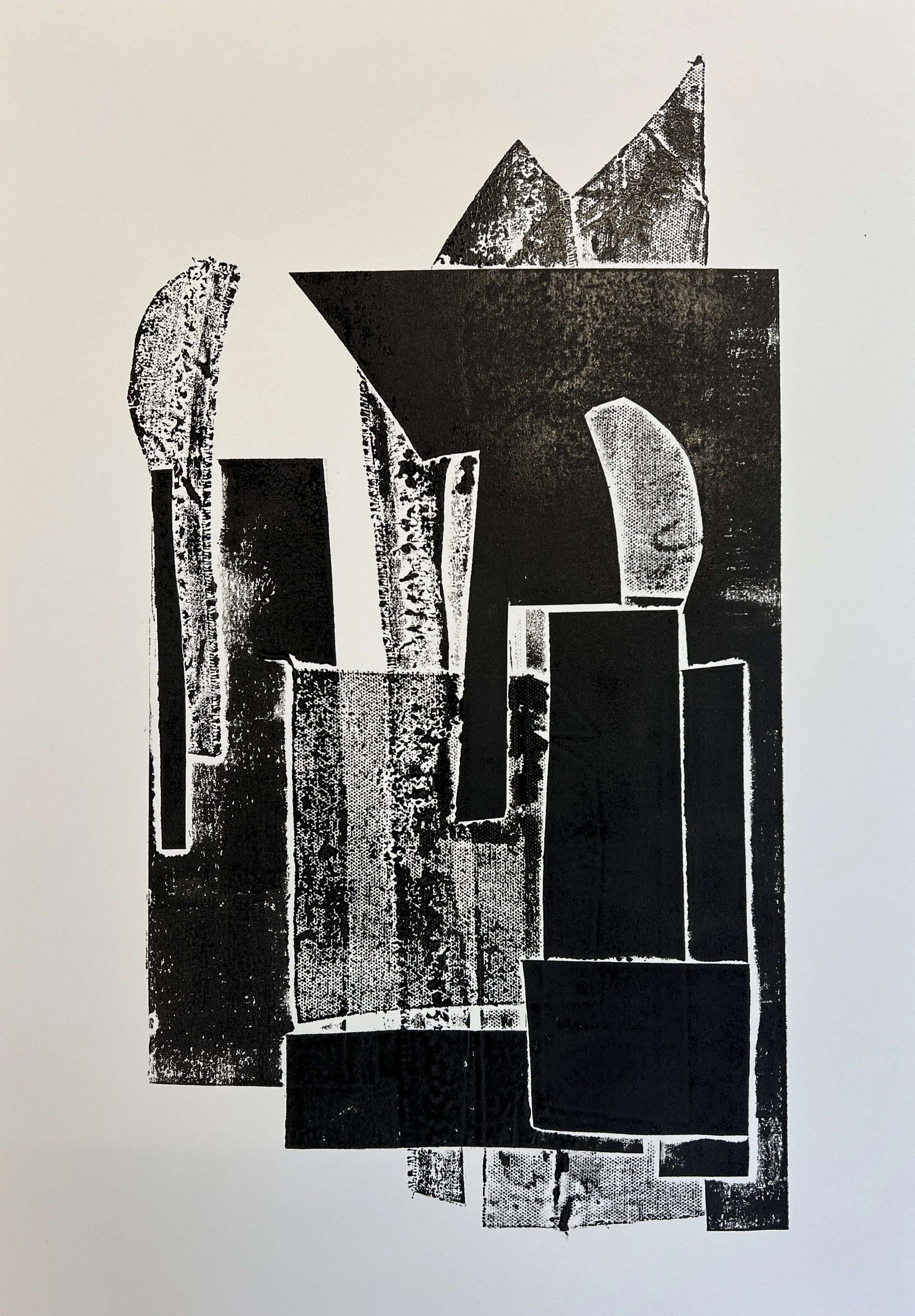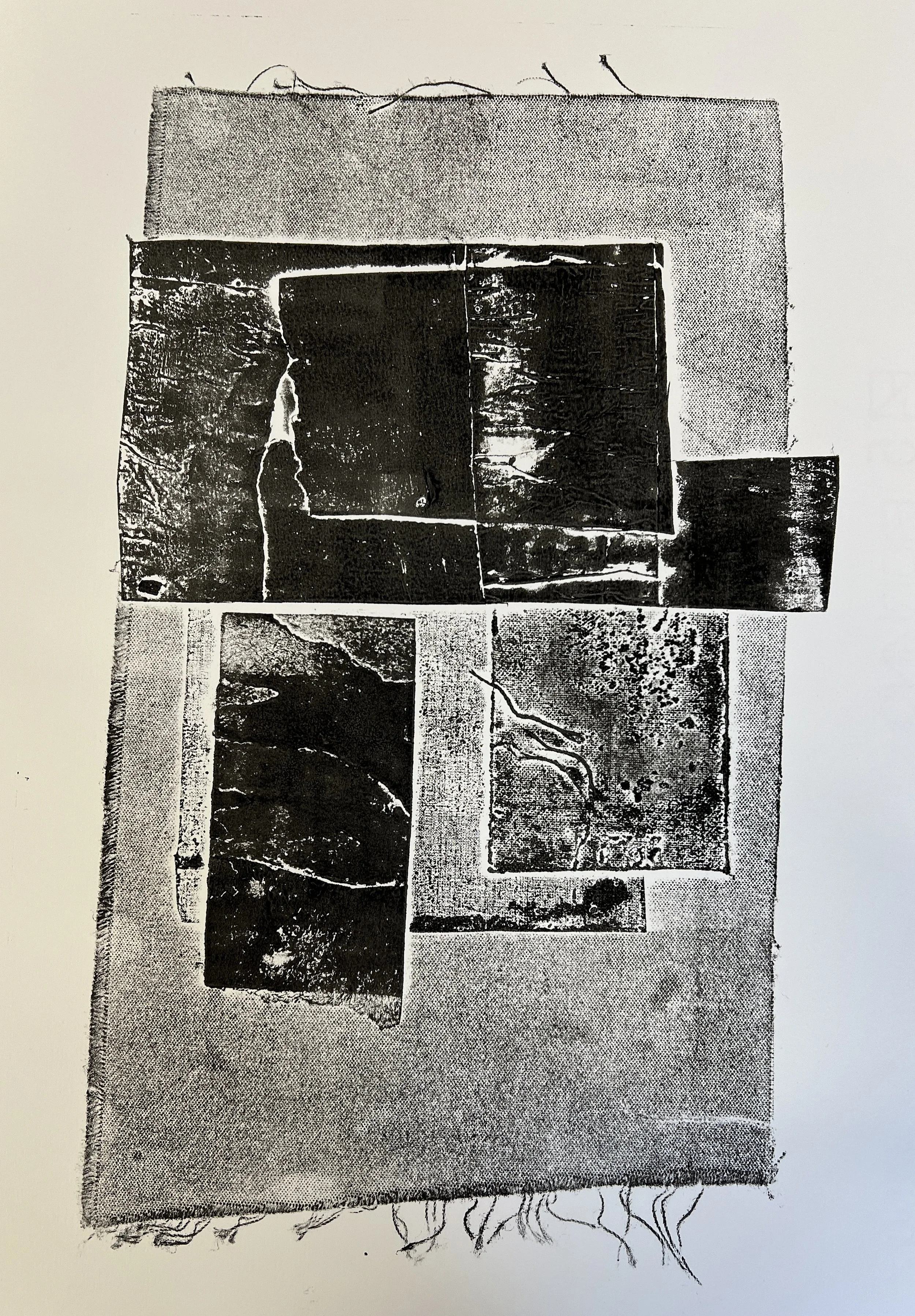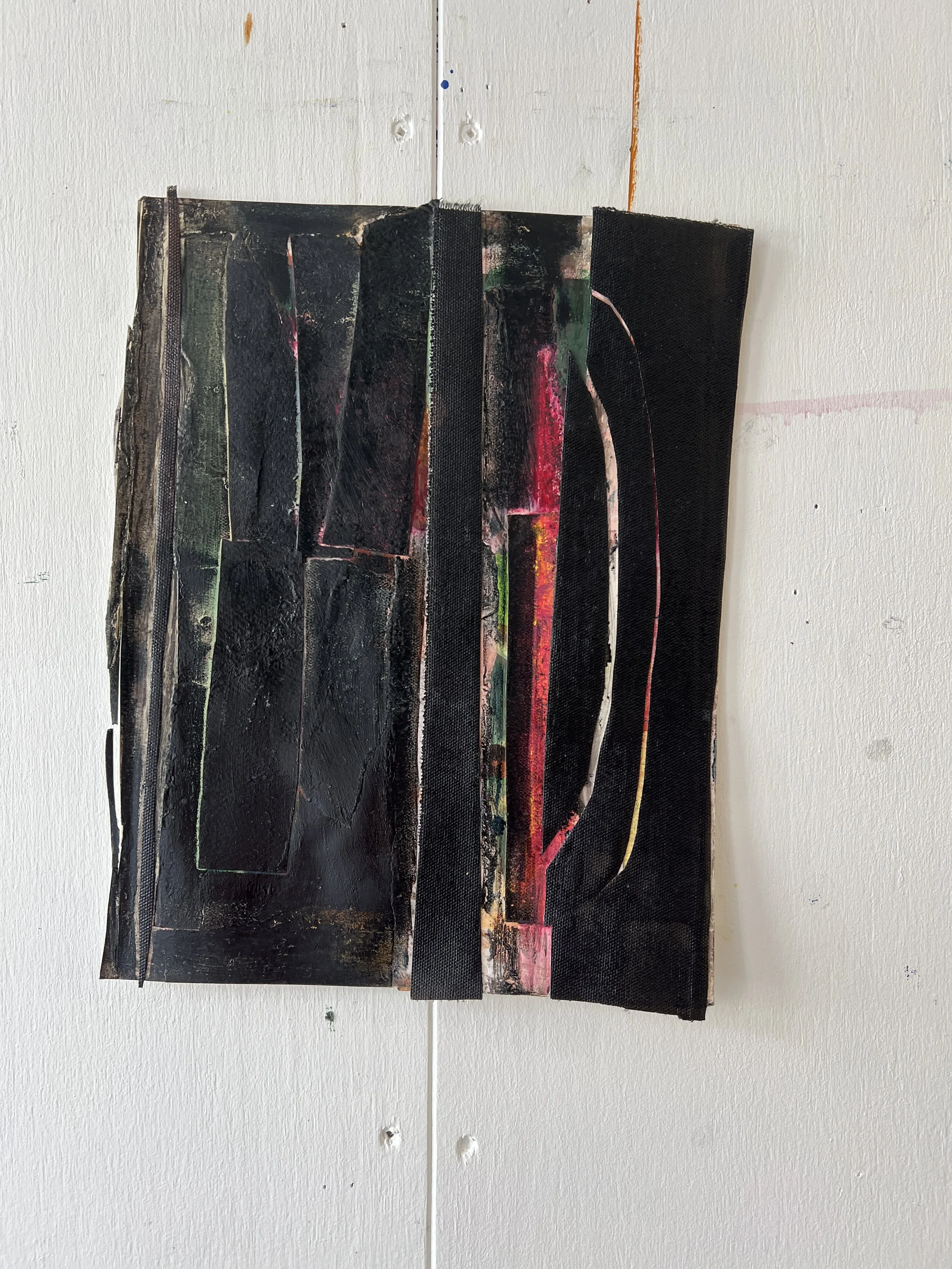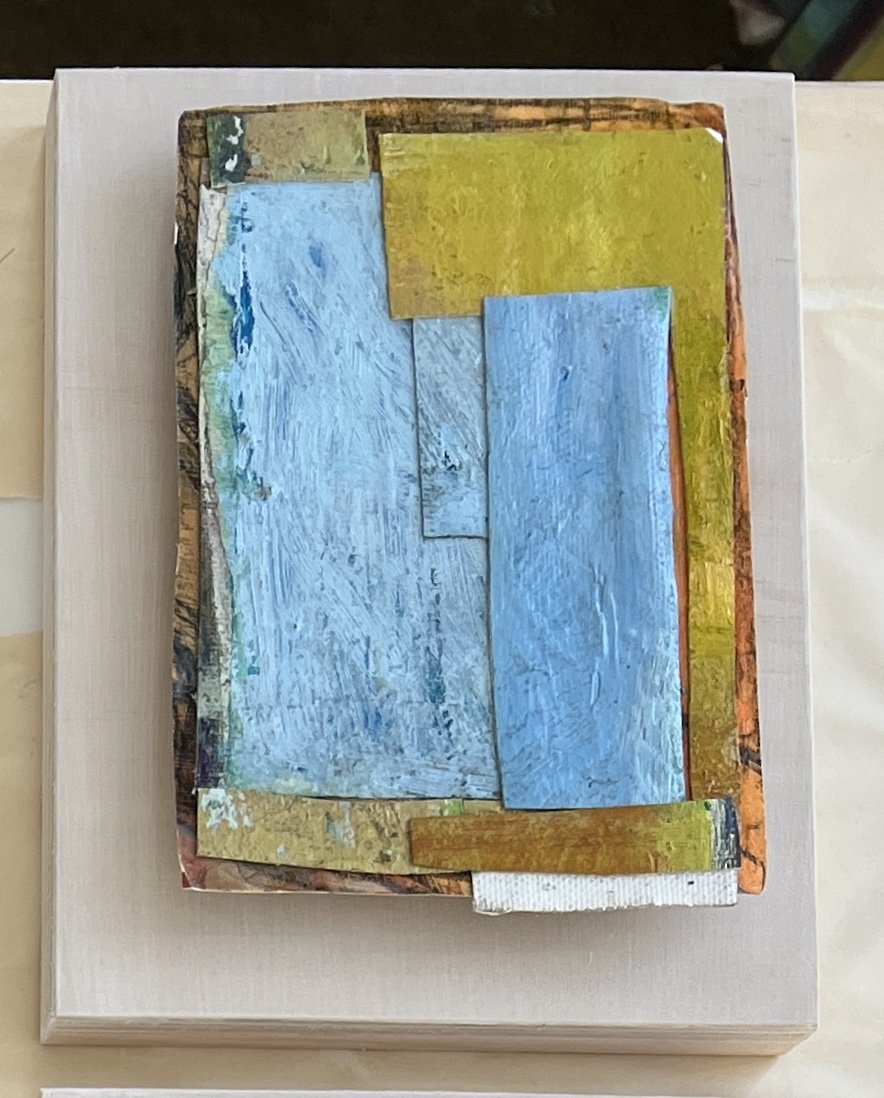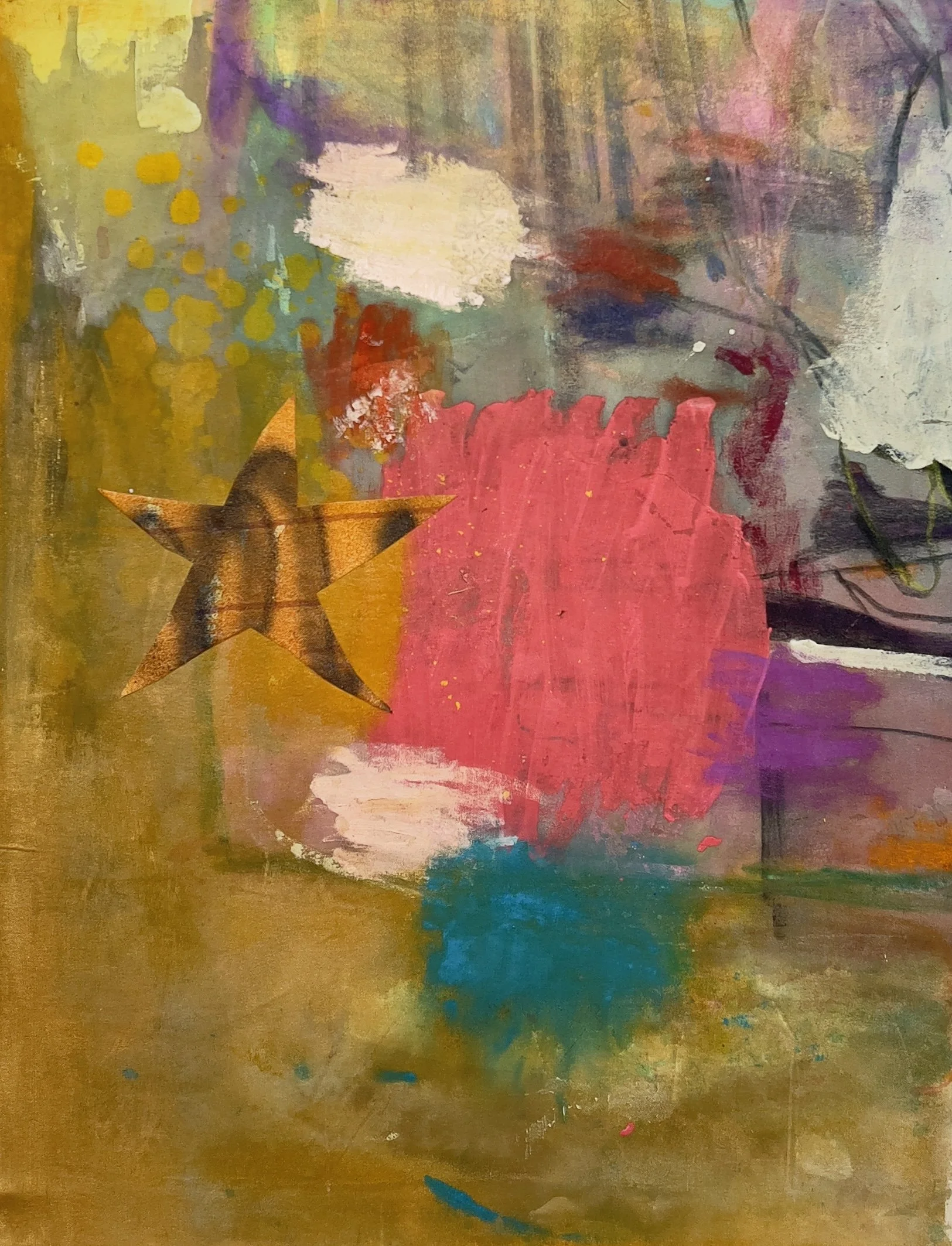Exhibitions of Influence
Notes to Self - Reflecting on Recent Exhibitions
How might recent exhibitions in Auckland, broadly labeled as 'Abstract Art,' reflect a shared but perhaps diffuse set of concerns? While certain themes—such as an interest in pattern, ornamentation, and the prominence of line—come forward, is there an underlying direction that unifies them, or are they instead a series of individual explorations?
Gus Fisher Gallery, Auckand
Three Approaches, Three Rooms 10 October - 7 December
In this exhibition, fellow Tāmaki Makaurau artists Christian Dimick, Dayle Palfreyman, and Peter Simpson transform the gallery’s three main spaces through painting, installation, and film. Each artist brings a unique, contrasting perspective, but Christian Dimick’s work is most resonant with my own practice. Dimick’s improvisational approach uses calico to hold residual marks after paint layers are partially removed. These works evoke the ephemeral nature of memories, dreams, and thoughts—concepts central to my own exploration of provisionality and the impossibility of fully capturing fleeting impressions. Dimick’s process visualizes painting as an open, continuous exchange, where fragments—a line, a dream, a layer—appear through surface, texture, and space (fig. 1).
Dimick’s repeated motifs of the house and certain animals is similar to the way I have currently been using more generic ‘iconic’ landscape motifs, hills, islands, stars, sun etc, in my paintings. I notice how he draws on childhood memories using a ‘childlike’ drawing style. This disinhibited, faux naive way of drawing is immensely appealing to me as it is an example of switching on the right hand side of the brain to allow imagery to become uniquely personal, in a way that so far I have largely kept to sketchbooks. Qualities found in the works of Cy Twombly spring to mind and at this point worth noting. Max Kozloff, American art historian and art critic, observed Twombly’s work, saying, “Without an inherent tone of struggle, or pretence of evoking the unconscious, his calligraphy assumes that it was nothing other than what it was.”1
Figure 1. Christian Dimick, WHERE WE STORE THE BLANKETS, 2024. Oil and acrylic, collage, calico on canvas.
Key experiments I have done since seeing this show have been printmaking, using collages I made earlier in the year and experimenting with layering and ghost images of these (see fig. 2-7).
Figure 2. Whitecliffe College printroom 2024
Figure 3. Sally Barron, footnotes, 2024, printed collage on paper, 210 × 297 mm.
Figure 4. Sally Barron, footnotes, 2024, printed collage on paper, 210 × 297 mm.
Previous Exhibition at Gus Fisher Gallery
DEREK JARMAN: DELPHINIUM DAYS
15 June – 14 September 2024
I was thinking about Jarmans collages once I made these, and remembered the layering of his tar and found objects especially.
Figure 4. Derek Jarman, Imperial Dreams, Material Nightmares 1988, Oil and mixed media on canvas
Figure 5. Sally Barron, footnotes, 2024, printed collage on paper, 210 × 297 mm.
Figure 6. Sally Barron, footnotes, 2024, ghost print, printed collage on paper, 210 × 297 mm.
Figure 7. Sally Barron, footnotes, 2024, printed collage on paper, 210 × 297 mm.
Coating the original collages with layers of printers ink made them begin to solidify into more sculptural objects (see fig. 8).
Figure 8. Sally Barron, footnotes, 2024, collage on canvas and cardboard, 210 × 297 mm.
detail
This in turn led me to visualise my smaller collages mounted on wooden platforms to give further depth to them as little structures, a key idea behind how they will be shown in the final exhibition (see fig. 9).
Figure 9. Sally Barron, Colour/Form, collage on canvas mounted on plywood.
Emma McIntrye - Objects & Vapours
(off site Coastal Signs)
McIntyre sees the alchemical process of sensory experience and memory as essential to painting, using the medium’s physicality to its fullest. She combines oil and mineral-based paints, including oxidized iron, creating rusted surfaces inspired by the experiments of Sigmar Polke and Robert Rauschenberg (see fig. 10).
Fig. 10. Emma McIntyre, Incantation, 2024, oil and iron oxide on canvas, 2490 x 1980 mm.
In Emma McIntyre’s “Note to Self”, her text from an artists talk accompanying the exhibition, she writes of “questions leading to more questions… and paintings leading to more paintings”.2 McIntyre references Roland Barthes’ idea that "what pleasure wants is the site of a loss, the seam, the cut, the dissolve, which seizes the subject in the midst of bliss," suggesting that pleasure is intensified by moments of disruption or interruption.3
These two ideas seem very pertinent to my end of year show, where I have worked and reworked old and new paintings, cut and sewn them together, explored all the iterations of each one, yet still could change every one of them all over again.
Smaller paintings that grow and accumulate layers have been an important accompaniment to my larger works. There is less pressure of them to be completed, and they may stay in the studio on the wall for months before I make a single or a few marks almost in passing, then leave again (see figs. 11 and 12).
Figure 11. Sally Barron, Raiders, Oil on canvas, 650mm x 800 mm, 2024
Figure 12. Sally Barron, Raiders, Oil on canvas, 650mm x 800 mm, 2024
wip at Demo
Figure 13. Sally Barron, starlight, Oil on canvas, 650mm x 800 mm, 2024
Footnotes
1 "In Contemplation of Lines and Scribbles – Cy Twombly’s Beautiful Writing," Art World, accessed November 15, 2024, https://www.artdex.com/about-us/.
2 Emma McIntyre, "Note to Self," Frog 21, February 2023, https://chateaushatto.com/wordpress/wp-content/uploads/2022/02/2023-Emma-McIntyre-Frog-22Note-to-Self22.pdf.
3 Roland Barthes and Richard Howard, The Pleasure of the Text, trans. Richard Miller (New York: The Noonday Press, 1975), 7.



